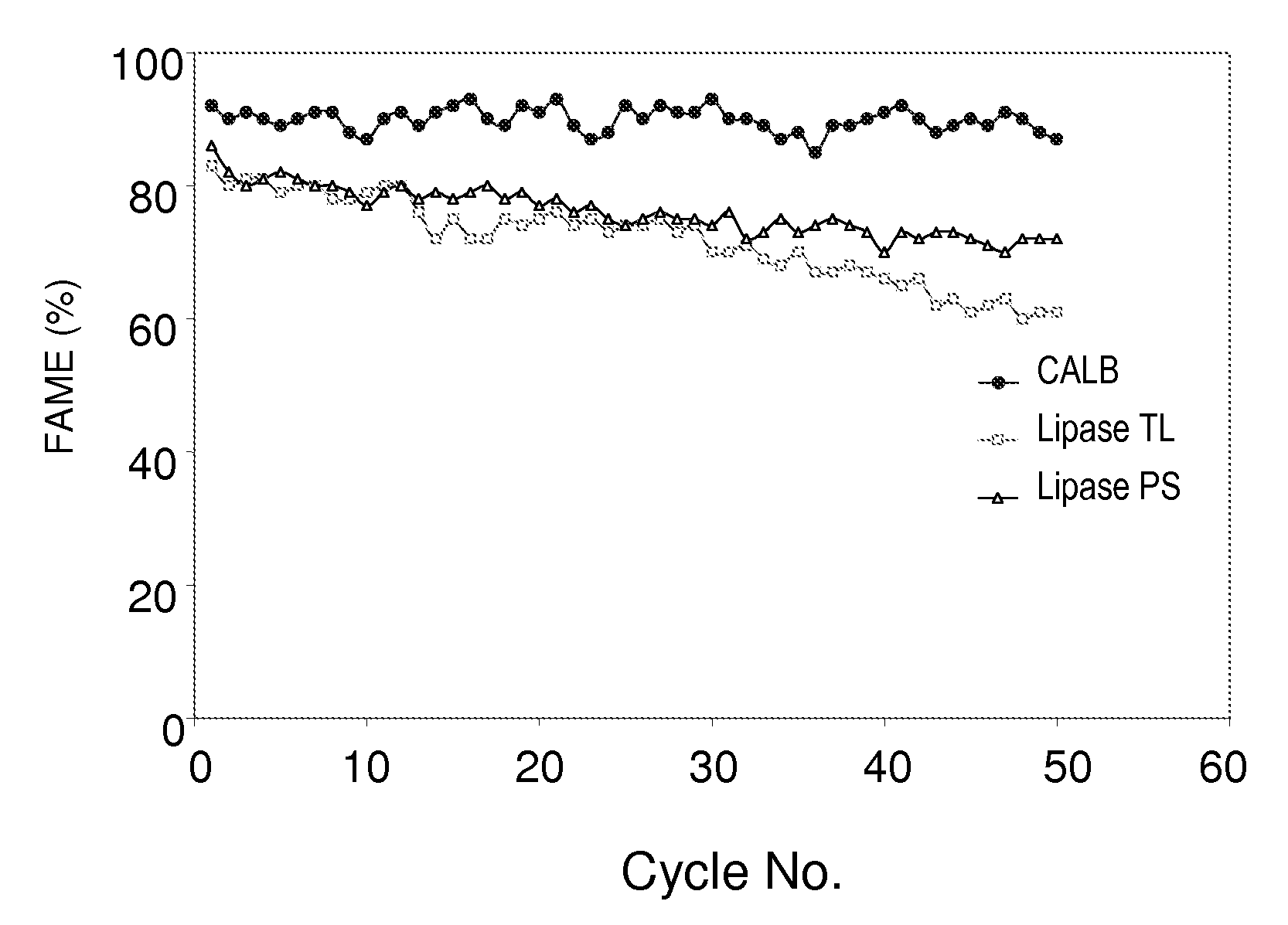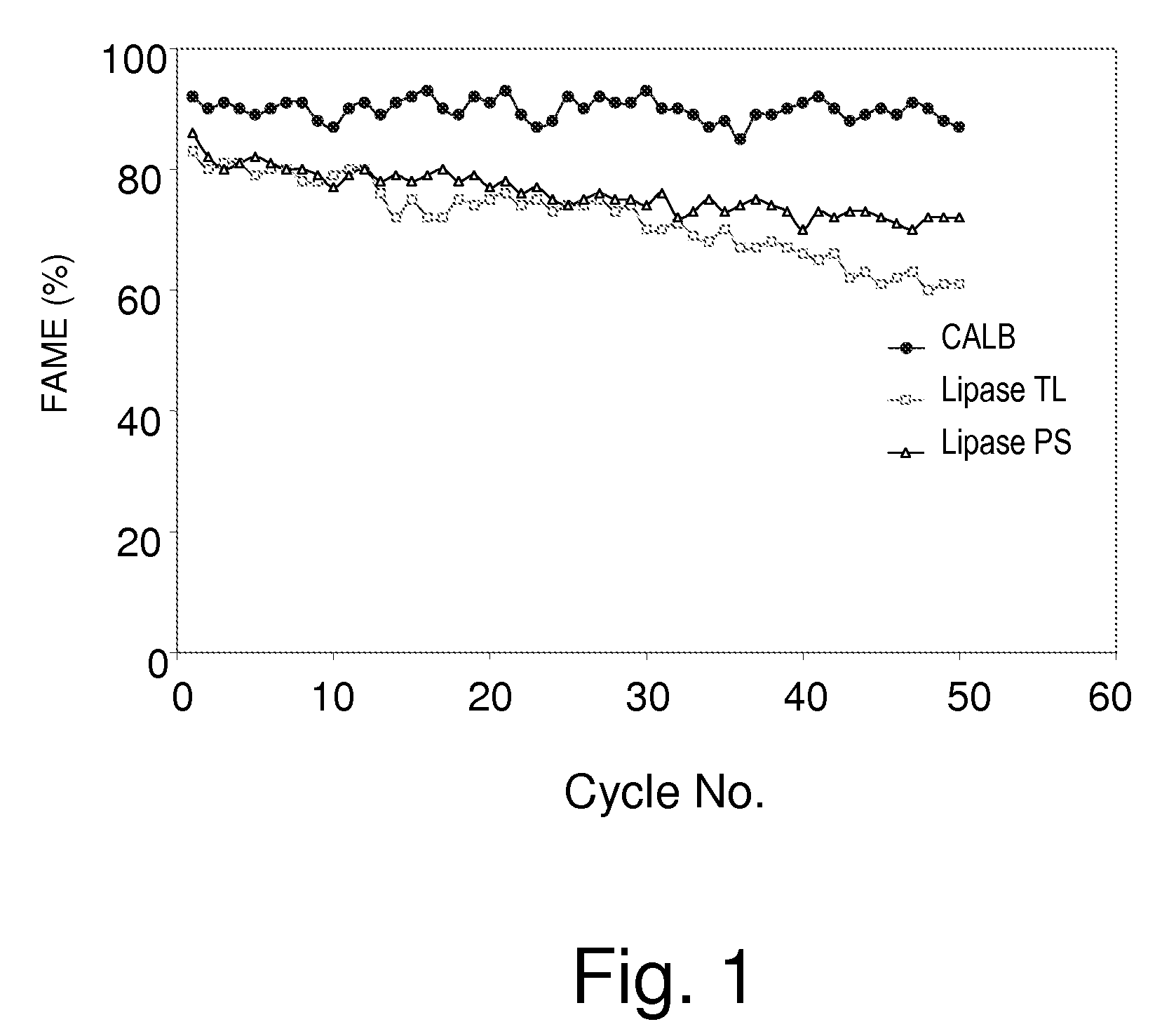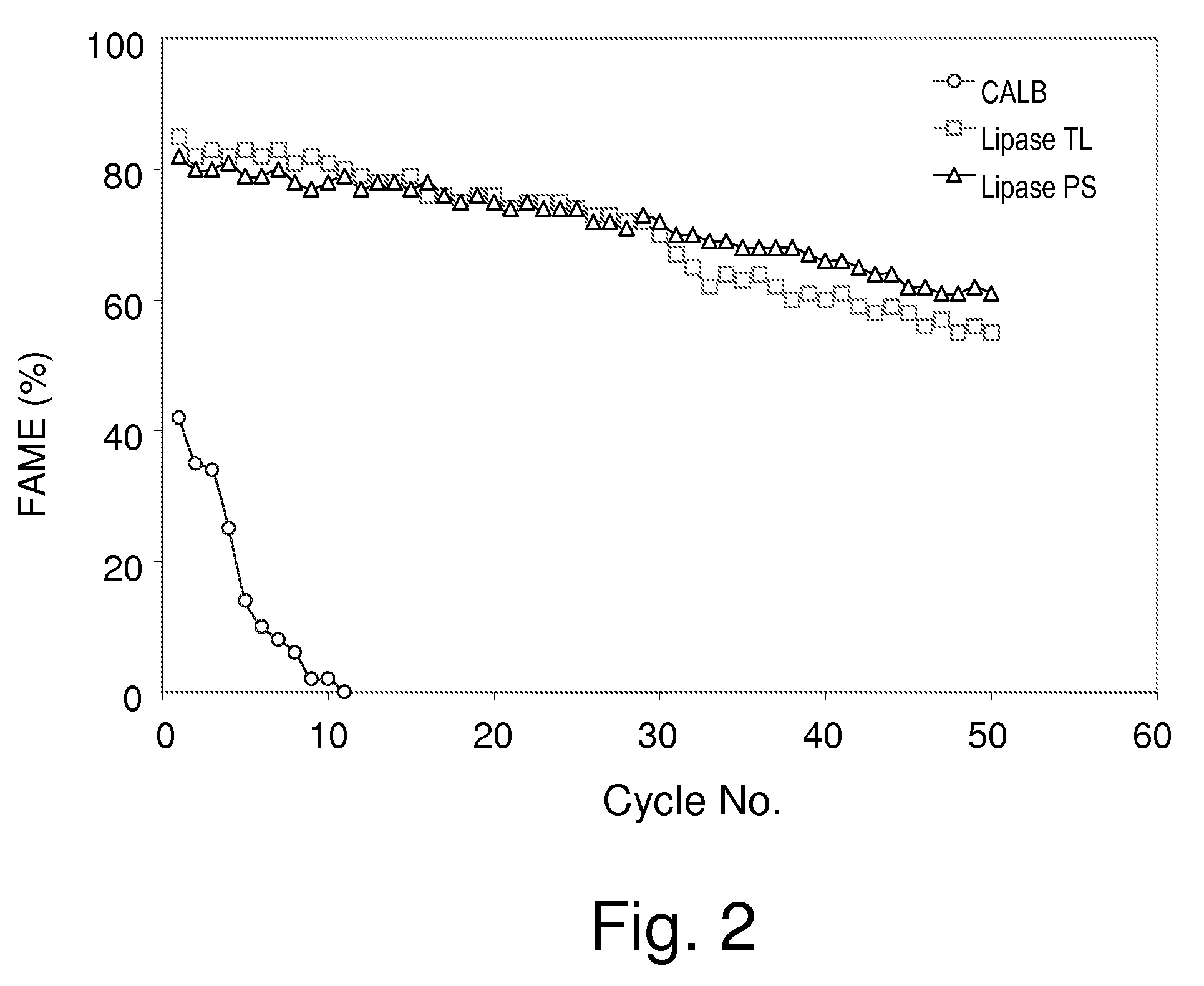Robust multi-enzyme preparation for the synthesis of fatty acid alkyl esters
a multi-enzyme, fatty acid alkyl ester technology, applied in the direction of biofuels, enzymes, fuels, etc., can solve the problems of low tolerance to hydrophilic substrates, inability to reach near complete conversion of all currently available lipases in either their free or immobilized forms, and inability to achieve the activity and stability of enzymes. , to achieve the effect of high quality
- Summary
- Abstract
- Description
- Claims
- Application Information
AI Technical Summary
Benefits of technology
Problems solved by technology
Method used
Image
Examples
example 1
Preparation of a Single Lipase Immobilized on a Polymeric Support
[0061]Lipase derived from Thermomyces lanuginosa (1 ml of Lipozyme TL 100L), or a lipase concentrate derived from Thermomyces lanuginose, (Novozymes, Denmark) was solubilized in a TRIS buffer solution (12 ml) of 0.05M and pH 8. The lipase solution was contacted with an enzyme support (1 g, the various supports used are shown in Table 1 below) by shaking or stirring for 8 hours at room temperature. Preferably, a hydrophobic organic solvent, such as n-hexane is added to the immobilization medium at ratios of 1:10-10:1 buffer:organic solvent, respectively. The support containing the immobilized enzyme was filtered off and dried in a desiccator overnight to yield the immobilized lipase. The same procedure was repeated, using either lipase derived from Pseudomonas sp. (100 mg Lipase PS, Amano Enzyme, Japan), lipase derived from Alcaligenes sp., (50 mg lipase QLM, Meito Sangyo, Japan) or Candida antarctica B lipase concentra...
example 2
Preparation of Multi-lipase Immobilized Biocatalysts
[0062]Lipase derived from Thermomyces lanuginosa (1 ml of Lipozyme TL 100L, Novozymes, Denmark) and Candida antarctica B lipase concentrate (1 ml, CALB-L, Novozymes, Denmark) were solubilized in a buffer solution (12 ml) of 0.05M and pH 8. The solution containing both enzymes was contacted with a support, such as Amberlite XAD 7HP (1 g) by shaking or stirring for 8 hours at room temperature. Preferably, a hydrophobic organic solvent, such as n-hexane, is added to the immobilization medium at ratios of 1:10-10:1 buffer:organic solvent, respectively. The support containing the immobilized enzymes was filtered off and dried in a desiccator overnight to yield immobilized multi-lipase preparation. The same procedure was repeated, using a solution containing either both lipase PS (100 mg, Amano Enzyme, Japan) and Candida antarctica B lipase concentrate (1 ml, CALB-L, Novozymes, Denmark), lipase PS (100 mg, Amano Enzyme, Japan) and Thermo...
example 3
Preparation of Fatty Acid Methyl Esters (FAME, Biodiesel) using Immobilized Lipases
[0063]Table 1 shows the percentage of the formed fatty acid methyl esters (FAME %) in transesterification reaction using lipases derived from Thermomyces lanuginose (TL), Pseudomonas sp. (PS) and Candida antarctica B (CALB), which were each immobilized separately on different supports. Reactions were carried out by adding immobilized lipase (30 g) to soybean oil (220 g) and methyl alcohol (23.9 g) (a stoichiometric ratio of 1:3 between oil triglycerides and methanol, respectively) into a double-jacketed glass reactor bottomed with a sintered glass filter of porosity of 70-100 μm. The methanol was added in batches each batch is ⅓ of the stoichiometric amount or titrated drop-wise. The reaction system is mechanically stirred at 30° C. Progress of the conversion of the raw materials is determined by measuring the percentage of fatty acid methyl esters, partial glycerides and triglycerides using GC after ...
PUM
| Property | Measurement | Unit |
|---|---|---|
| water content | aaaaa | aaaaa |
| reaction time | aaaaa | aaaaa |
| pH | aaaaa | aaaaa |
Abstract
Description
Claims
Application Information
 Login to View More
Login to View More - R&D
- Intellectual Property
- Life Sciences
- Materials
- Tech Scout
- Unparalleled Data Quality
- Higher Quality Content
- 60% Fewer Hallucinations
Browse by: Latest US Patents, China's latest patents, Technical Efficacy Thesaurus, Application Domain, Technology Topic, Popular Technical Reports.
© 2025 PatSnap. All rights reserved.Legal|Privacy policy|Modern Slavery Act Transparency Statement|Sitemap|About US| Contact US: help@patsnap.com



